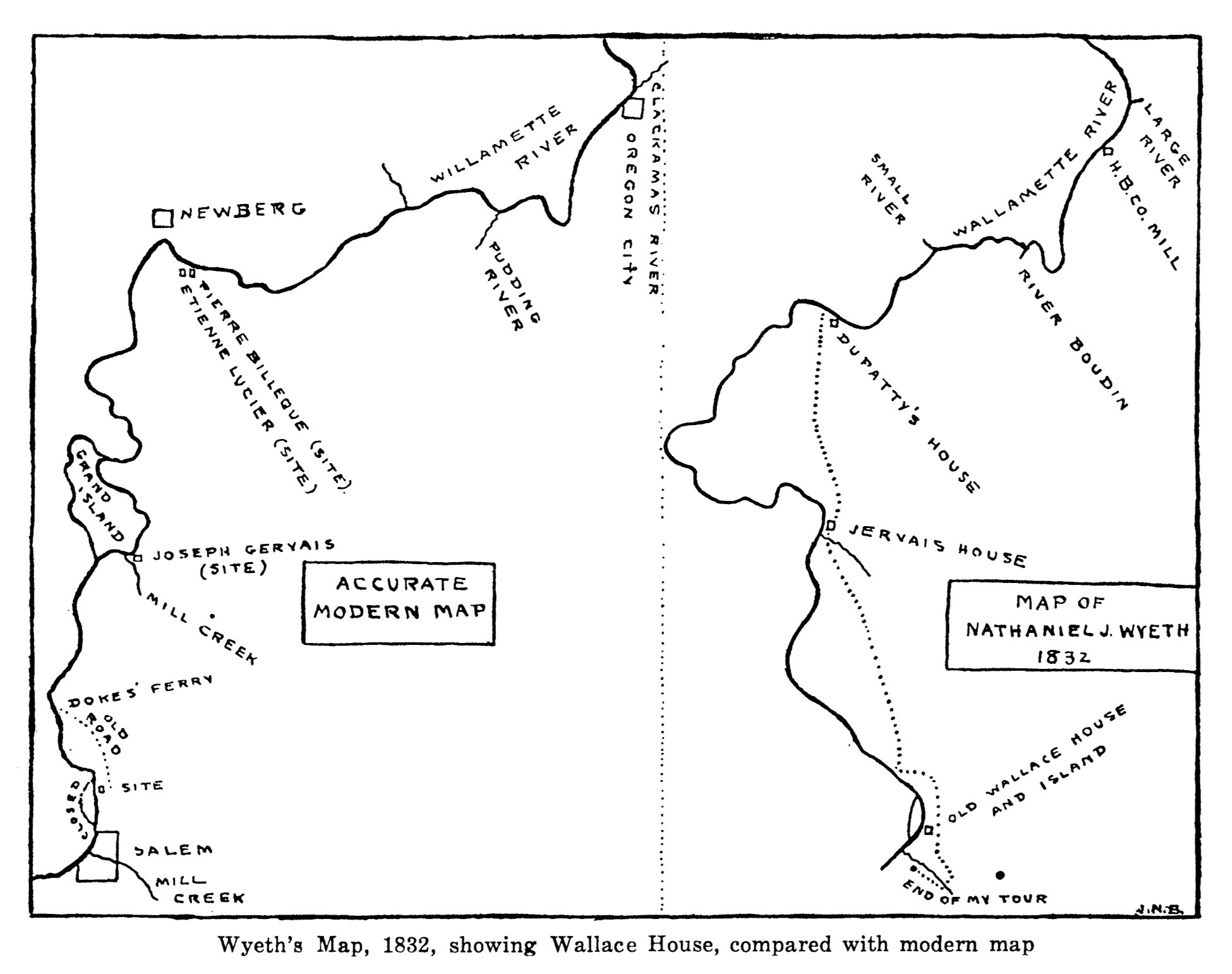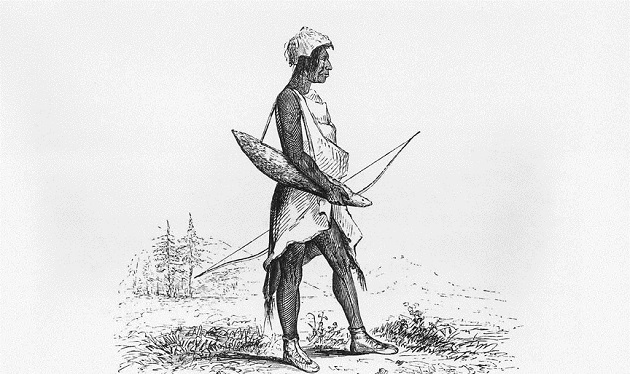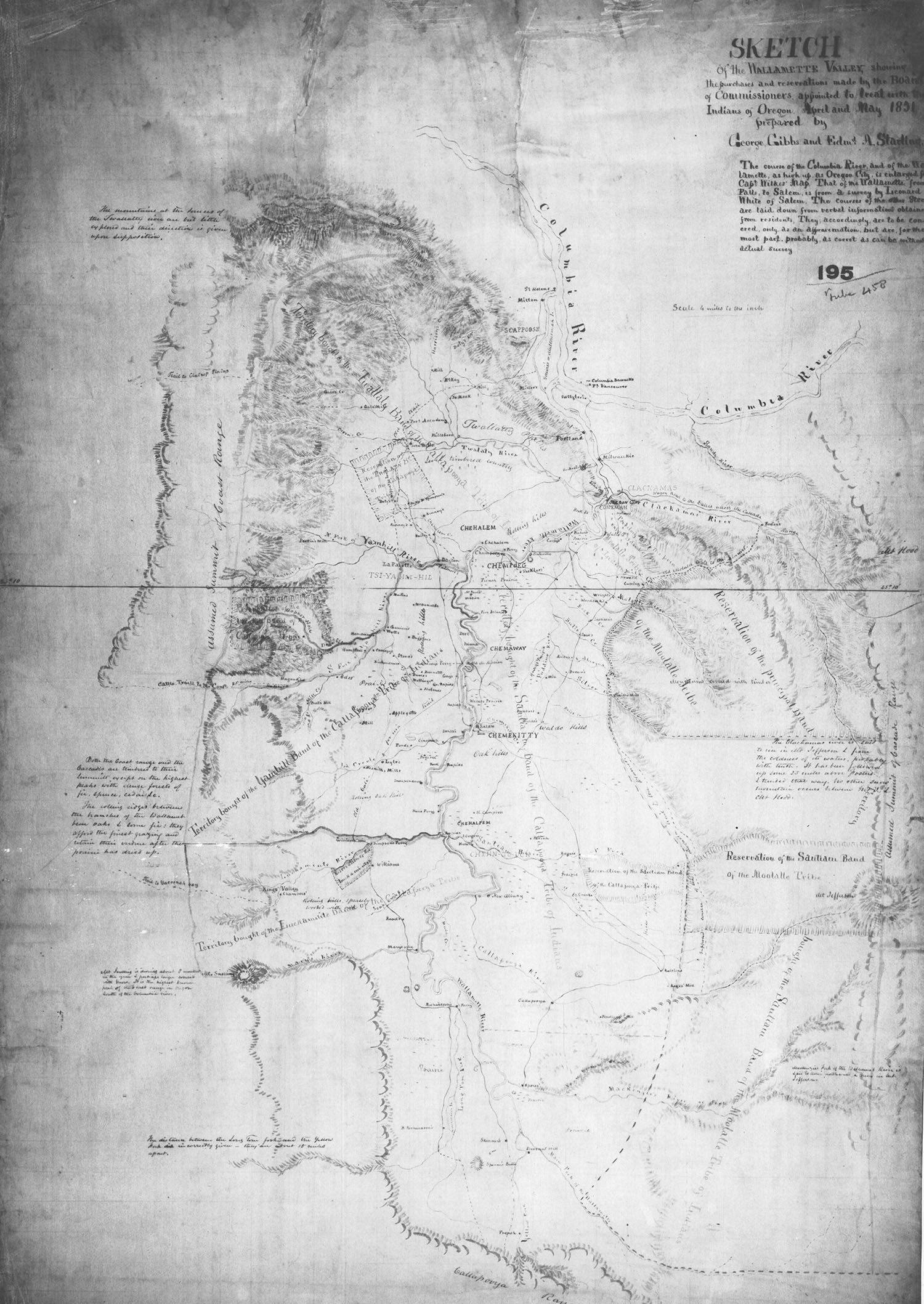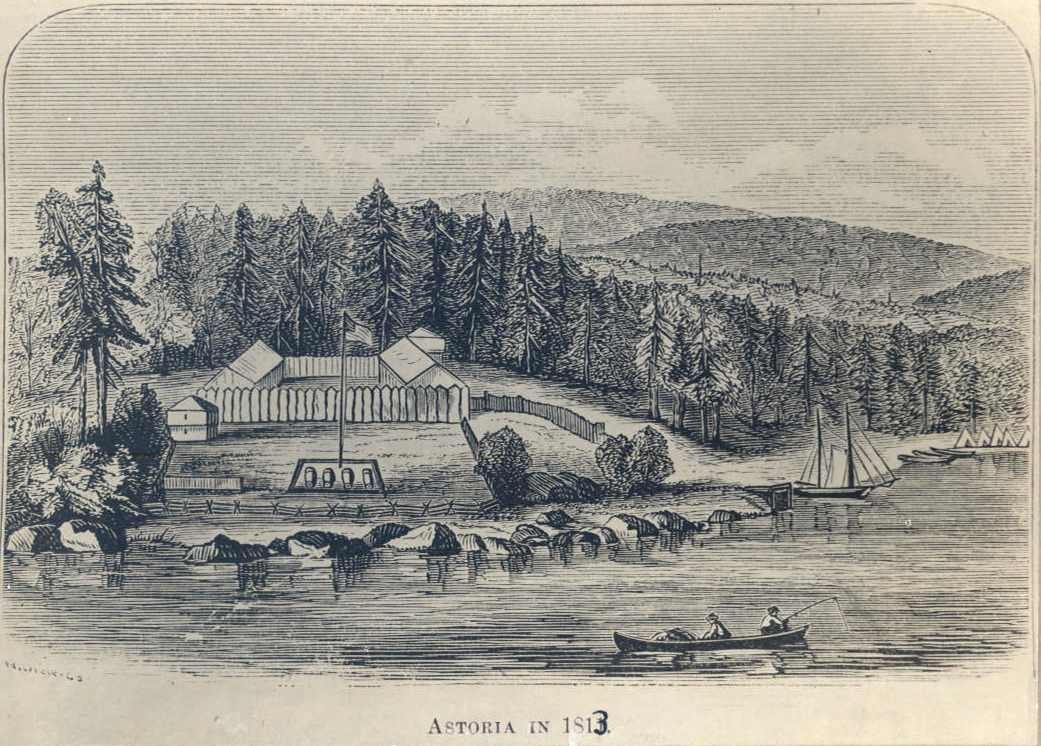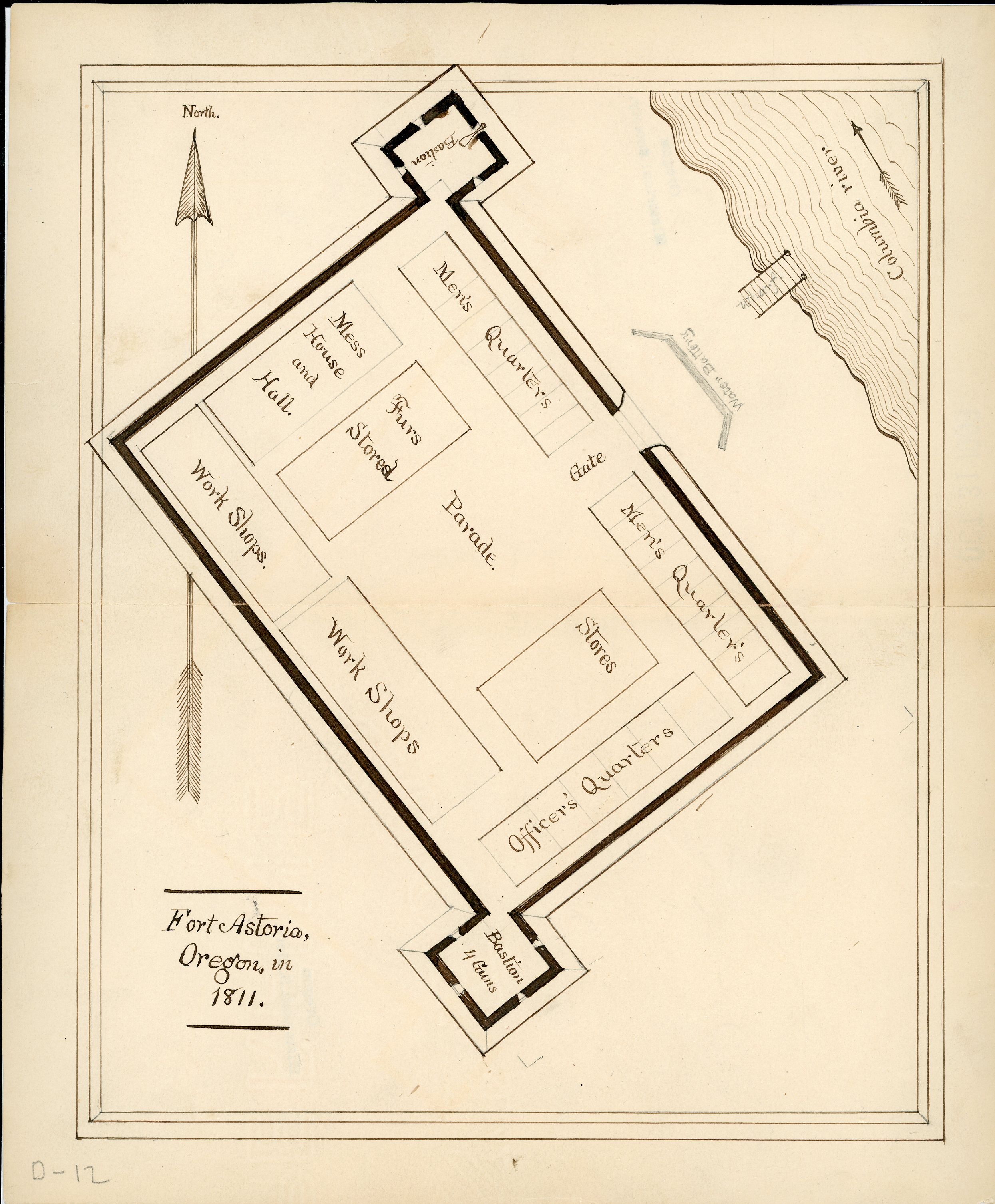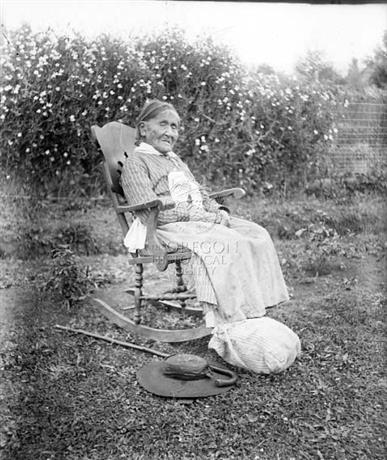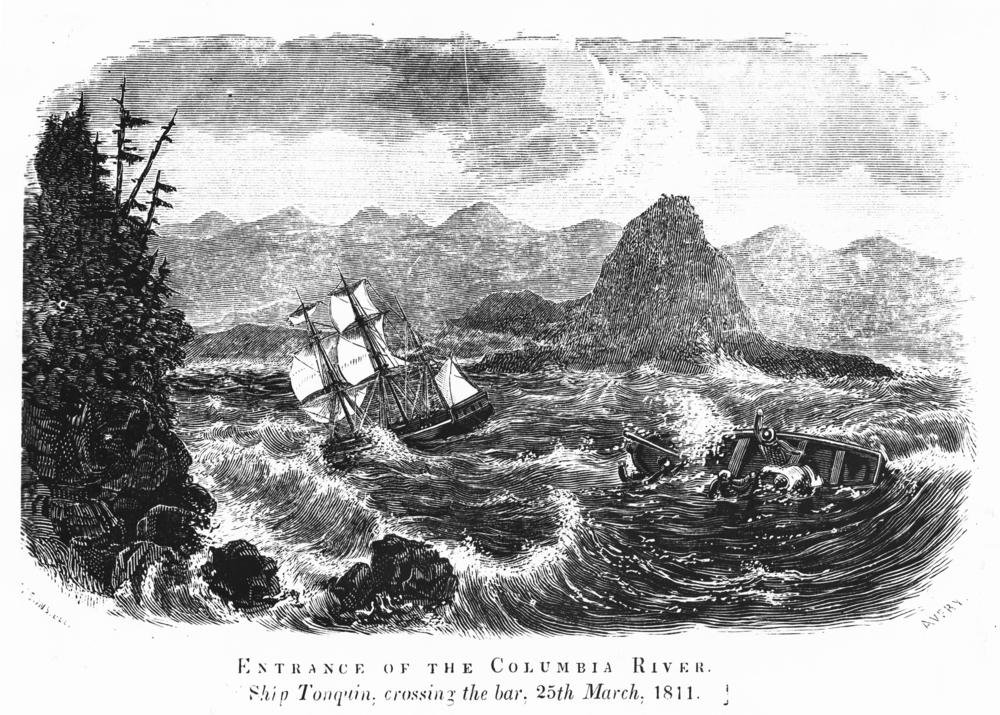Wallace House, built in 1812 north of the Kalapuya village of Chemeketa, was the first known building of European-American design in the Willamette Valley. As the first fur trading post in the valley, it provided part of the United States claim to the Oregon Country. Based largely on the journal of Alfred Seton, a clerk with the Pacific Fur Company, and a map drawn by expeditionist Nathaniel Wyatt, historians believe the House was most likely located in what is now the City of Keizer, just north of Salem along the east bank of the Willamette River. Living near Wallace House were the Chemeketa Kalapuyans, whose village was where Salem is today. The Chemeketans were a band of the Santiam Tribe whose territory extended to present-day Lebanon.
In 1811, John Jacob Astor’s Pacific Fur Company established Fort Astoria near the mouth of the Columbia River, in Clatsop tribal territory. The location gave the company connections with local Chinookan people and ready access to ocean-going trading vessels, but it did not allow for much agriculture, and hunting was limited. By the winter of 1812, the men at the fort were running out of food and were loathe to rely on what the local residents ate, including salmon. There was plentiful game in the mid-Willamette Valley, however, and they decided to send some men to live there over the winter and charged them with keeping Fort Astoria provisioned with meat.
Wallace House was named for clerk William Wallace, who with clerk John Halsey split off from a trapping and hunting expedition led by Astor partner Donald McKenzie in the spring of 1812 to establish an outpost on the Willamette River near Kalapuyan Tribes. The fur men traded with local Natives, explored farther into the interior, and hunted elk and deer to be sent to Fort Astoria. During 1812 and 1813, they returned numerous times to Fort Astoria to deliver provisions, including furs they had trapped and traded for with the Kalapuyans. It is likely that the Kalapuyans were eager to participate in the trade at Wallace House, where they gained valued products such as glass beads, metal tools, and fabrics. Because of the value beaver pelts fetched at the trading post, local people increasingly hunted beaver and other small fur-bearing animals.
Wallace House was mostly abandoned by 1813, when the Pacific Fur Company was sold to the Montreal North West Company. The sale was precipitated by news of the War of 1812 and the threatened arrival of a British warship at Fort Astoria. The Pacific Fur Company had been losing money each year, and the partners sought to get what value they could out of the effort before the British arrived to seize the fort. When the warship arrived, the fort was already flying British colors, raised by the Canadian trappers, and was renamed Fort George. There is no record of Wallace House being used after that time, and the structure gradually rotted away.
The 1851 Gibbs-Starling map denotes Wallace Prairie in present-day south Keizer, suggesting that it was a commonly used name for the prairie north of Salem. The City of Keizer commemorates the trading post with Wallace House Park on what is assumed to be its location on present-day Rivercrest Drive North.
-
![The Wallace House is sited on the lower right. The left side of the map is a more modern sketch of the area for reference.]()
Nathaniel Wyeth's map of the area north of present-day Salem, 1832.
The Wallace House is sited on the lower right. The left side of the map is a more modern sketch of the area for reference. From the Oregon Historical Quarterly, Volume 42, no. 3, 1941, p. 204
-
![]()
"Costume of a Callapuya Indian," 1841, by Alfred T. Agate.
Courtesy Oreg. Hist. Soc. Research Lib., OrHi 104921
-
![Map of land purchases and reservations negotiated by Board of Commissioners]()
Sketch of the Wallamette Valley, George Gibbs and Edmund Starling, 1851.
Map of land purchases and reservations negotiated by Board of Commissioners Courtesy Oregon State University Special Collections and Archives Research Center, Corvallis -
![Earliest known illustration of Fort Astoria, by Gabriel Franchere, employed by Astor,]()
Fort Astoria, 1813.
Earliest known illustration of Fort Astoria, by Gabriel Franchere, employed by Astor, Courtesy Oreg. Hist. Soc. Research Library, OrHi51
Related Entries
-
![Astor Expedition (1810-1813)]()
Astor Expedition (1810-1813)
The Astor Expedition was a grand, two-pronged mission, involving scores…
-
![Fur Trade in Oregon Country]()
Fur Trade in Oregon Country
The fur trade was the earliest and longest-enduring economic enterprise…
-
![Kalapuyan peoples]()
Kalapuyan peoples
The name Kalapuya (kǎlə poo´ yu), also appearing in the modern geograph…
-
![North West Company]()
North West Company
First organized in 1779 by a small group of Canadian fur traders based …
-
![Pacific Fur Company]()
Pacific Fur Company
The Pacific Fur Company, employee Alexander Ross wrote in 1849, was “an…
Related Historical Records
Map This on the Oregon History WayFinder
The Oregon History Wayfinder is an interactive map that identifies significant places, people, and events in Oregon history.
Further Reading
Henry, Alexander, David Thompson, and Elliott Coues. New light on the early history of the greater Northwest. The manuscript journals of Alexander Henry and of David Thompson, 1799-1814. Cambridge: Cambridge University Press, 2015.
Boyd, Robert. The Coming of the Spirirt of Pestilence. Vancouver, B.C.: UBC Press, 1999.
Lewis, Meriwether, William Clark, and Nicholas Biddle, ed. The Lewis and Clark Expedition. Philadelphia, PA: Lippincott, 1961.

